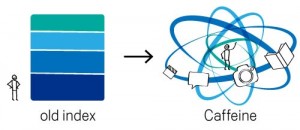Searchengine land posted a great article for all you SEO peeps.
I hear this question, in various forms, quite often these days:
“What’s up with Google now, post-Panda/Farmer/whaddayacallit? What am I supposed to be doing for SEO?”
(Usually accompanied with a deep sigh, aggressive hand gestures, and/or grimacing.)
It All Started With Caffeine
“Caffeine lets us index web pages on an enormous scale.” – Carrie Grimes, Google
If we look back a year ago, when Google rolled out Caffeine, which was (and still is) unprecedented in search, it was this infrastructure change that allowed for the dramatic algorithm improvements we’ve seen recently.
Caffeine was not an algorithm change but instead a massive improvement to the freshness of Google’s index and its ability to crawl and then index content nearly in real time.
But closely timed with these changes was the Mayday update, which specifically focused on returning quality results for long-tail queries. Ecommerce sites were impacted, as were any sites with an architecture built around item-level URLs standing on thin content and separated by several clicks from higher-authority pages (like home pages, major categories, or any URL with authority and unique content).
Then came Panda/Farmer. While Mayday appeared to hit a relatively small portion of the total query space, the latest version of Panda has a much stronger impact, hitting about 12% of all searches. As distinct from Mayday, which focused on long-tail quality and authority (penalizing shortcuts such as simply matching keywords to queries), Panda focuses on concepts such as quality, authority, trust and credibility, and also incorporates user signals.
So why does Caffeine matter so much? It seems that Caffeine, at least in part, has enabled these evolutions in the algorithm, through its ability to index such a massive portion of the web. Carrie Grimes from Google again:
